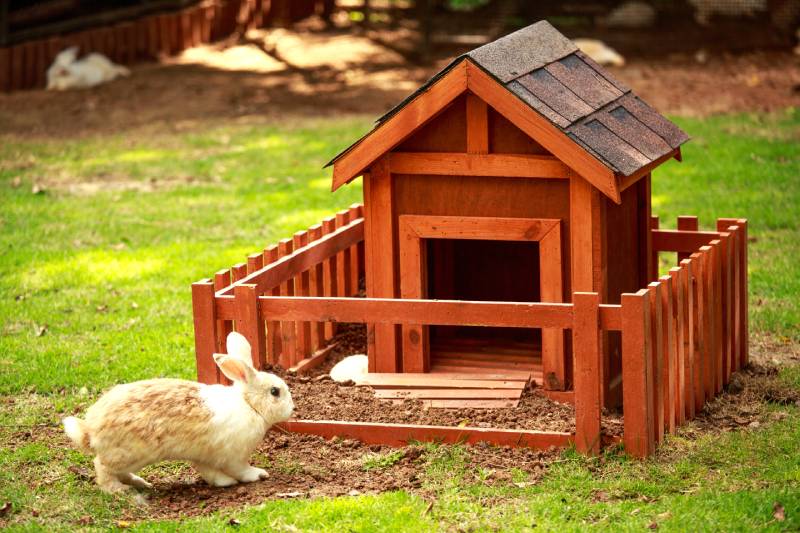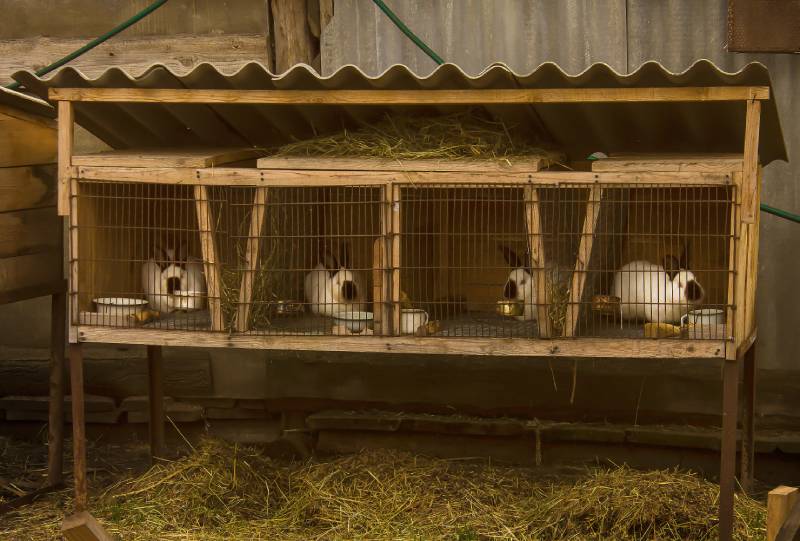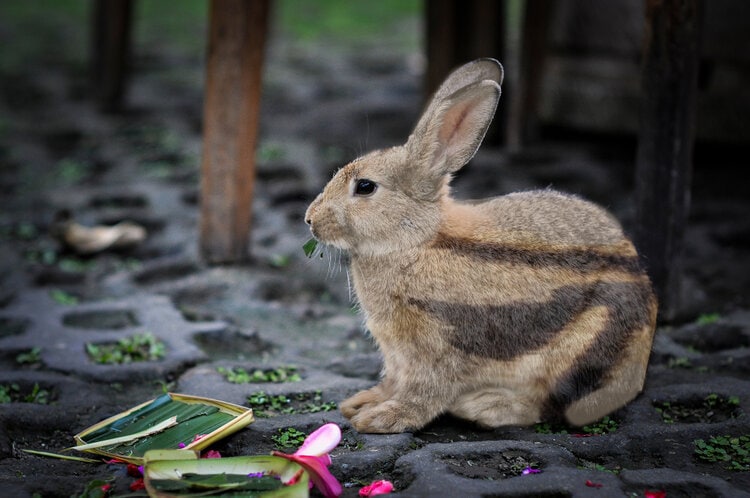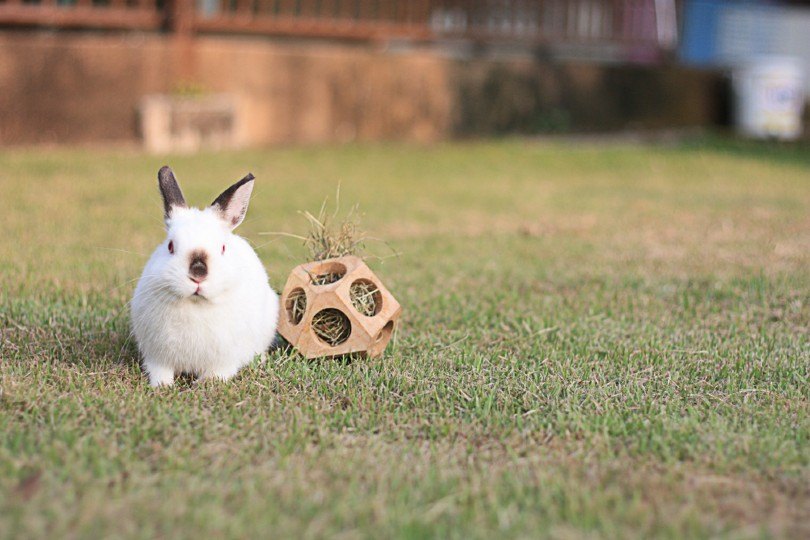
Rabbits live on six of the seven continents, so as a species, they’ve evolved and adapted to a wide range of climates. For example, the White-Tailed Jack Rabbit lives in Northern Canada, where temperatures are often well below -30°F. On the other end of the spectrum, the Desert Cottontail that lives in Mexico often experiences temperatures over 110°F.
Healthy wild and domestic rabbits that live in the environment their breed is designed to live in are quite cold hardy. They can live happily outdoors all year long, even in times of temperature extremes. That said, not every rabbit breed will fare well in cold temperatures.
Keep reading to learn more about keeping your pet rabbit safe and healthy during the cold winter months.
How Cold Is Too Cold?
Though rabbits can fare well in cooler temperatures, some can still get cold when the temperature dips at night. Therefore, it’s not a good idea to keep your pet outside in temperatures below 30°F as its body heat alone won’t provide the warmth it needs. This is just a guideline, however, as the wind chill and amount of dampness can affect how cool the air feels and how safe it is to keep your rabbit outside.
That said, cold weather can sometimes increase the energy level of domestic rabbits, even invigorating them in some circumstances. Of course, you won’t know how your pet does in cold weather until the time comes, so keep a close eye on your rabbit, its eating habits, activity level, and the temperature inside its hutch when winter comes.
Remember, the ambient temperature inside your rabbit’s hutch is likely much warmer than outside. Still, it’s not a terrible idea to have a thermometer in the hutch so you can keep an eye on how warm or cool it is inside.

The 7 Tips to Help Your Rabbit Feel Warmer
There are several things owners can do to keep their outdoor rabbits warm in cold temperatures.
1. Move Your Rabbits
Moving your rabbits to a warmer area during cold snaps is probably the best way to ensure they’re staying at a comfortable temperature. However, we don’t recommend moving them into your home, as it’ll feel too warm for your pets, and the sudden temperature shift can shock them.
Instead, move them into a shed or garage. You don’t need to make them as warm as possible; instead, keep their temperature above freezing.
You might also consider moving the hutch into a place in your yard that doesn’t get as much wind or dampness.

2. Re-do Their Hutch
Rabbits that aren’t kept inside a climate-controlled shelter (e.g., your home) need a dry place with as little wind exposure. A wooden structure is a great option but will deteriorate over time. Before the cold weather hits, inspect their shelter and ensure there’s no way for wind or water to get inside. Reapply the coating and seal any gaps if necessary.
If the hutch is not raised off the ground, you’ll want to build some legs or place bricks under it. If the hutch’s base becomes damp, it can rot faster and make it more prone to chilling.
If the shelter has wire flooring, install a solid floor in one section to allow your rabbit a place to escape cold drafts.
3. Cover the Hutch
If you know an extreme cold snap is on the way, you might consider investing in a hutch cover to help keep warm inside your pet’s shelter. You can also use a warm blanket over the top if you prefer not to buy a hutch cover.

4. Use More Insulation
Stuff your rabbit’s hutch with extra straw to provide more insulation. Straws’ hollow construction allows warm air to become trapped inside, making it a fantastic insulator that can provide your pet with a warm and cozy bed for snuggling during the cold nights of the year.
5. Buy a Heating Pad
A heating pad is another great investment to consider for your outdoor rabbits. It gives your pet a place to warm up and can also potentially increase the ambient temperature in the hutch.
A heating pad is also great because it allows your rabbit to move toward the heat if it feels too cold.

6. Provide Plenty of Fresh Water and Food
Rabbits will expend more energy during cold weather to keep themselves warm. Therefore, you will need to provide them with more high-quality food to give them the energy they need to regulate their temperature better.
It should go without saying that your rabbit needs access to fresh water 24/7. However, it can be challenging to keep water from freezing in cold temperatures, so you’ll need to keep a close eye on your pet’s water bowl. A rabbit that’s not drinking enough will stop eating its hay and pellets, which can make them fall ill. A thermal water bowl is another product you might consider buying to prevent your rabbit’s water from freezing.
Keep a close eye on your pet’s body condition throughout the winter. If you notice that it appears to be losing weight, you’ll probably need to increase its food portions.
7. Offer Plenty of Opportunities for Exercise
Rabbits still need to exercise during the winter months, so attaching a covered exercise run to its hutch can allow them to exercise to their heart’s content when they please.
Make sure a portion of the run is always kept dry and shelter, and give your rabbit plenty of hiding spots they can sneak off to if they feel frightened.
In addition to installing an exercise run, make sure your pet has access to toys at all times, too.

Conclusion
Rabbits can learn to live with colder temperatures so long as you provide them with proper nutrition and appropriate housing.
Wet conditions can chill your rabbit very quickly, so it’s important to be vigilant and always check your rabbit’s hutch to ensure it’s in good shape for cold and wet weather. In addition, keep an eye on the thermometer and weather forecast and be proactive to keep your rabbit healthy and safe in cool weather.
Featured Image Credit: Rudmer Zwerver, Shutterstock







